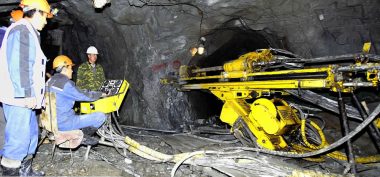 Gold touches many aspects of our life. In addition to being a trusted investment asset and worn as jewellery, it is also all around us hidden from view ensuring the safe operation of medical and electronic devices we rely on every day. As part of mining gold, responsible gold miners are making significant contributions to society including bringing jobs and opportunities to communities around the world.
Gold touches many aspects of our life. In addition to being a trusted investment asset and worn as jewellery, it is also all around us hidden from view ensuring the safe operation of medical and electronic devices we rely on every day. As part of mining gold, responsible gold miners are making significant contributions to society including bringing jobs and opportunities to communities around the world.
Gold mining projects only proceed once permits have been granted by the government of the host country. All aspects of these applications are scrutinised closely, and ESG considerations are of critical importance.
Securing a “social licence to operate” depends on building and nurturing healthy, collaborative partnerships with host governments and communities. Trust is foundational to these long-term partnerships and is built through responsible environmental and social impact management and appropriate stakeholder engagement, contributing to good governance and fairly sharing the benefits of mining.
Gold is an important industrial metal, and is used in laboratories around the world in the development of new technologies to answer some of society’s most pressing challenges. Gold in its nanoparticle form is of particular importance.
Gold’s diverse properties make it very important in the healthcare sector, where it has a broad range of uses.
Gold mining companies are working to improve the efficiency and safety of their mine vehicles and equipment.
Companies are trialling new hybrid, fully electric and fuel cell vehicles at open pit mines with a view to reducing energy consumption and greenhouse gas emissions. Trucks are also increasingly being fitted with state-of-the-art control technologies such as proximity detection systems with a view to improving safety across mine sites.
Traditionally, the electricity needed at a mine has been sourced from the local grid infrastructure, or by operating diesel generators on site. However, recent years have seen the cost of renewable energy fall rapidly, and this has spurred increasing numbers of gold miners to develop their own on or near-site renewable energy generation assets such as solar or wind farms.
This is contributing to lowering greenhouse gas (GHG) emissions, and taking some of the pressure off local grid systems which can struggle with demand at peak times.
New technologies are also revolutionising how underground gold mines operate. One example is the Borden mine, a fully electric underground gold mine in Northern Ontario, Canada.
